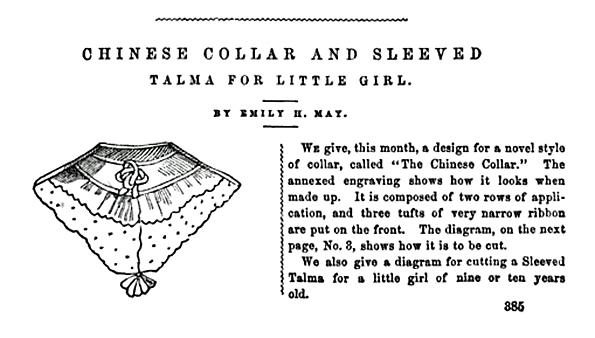Today's post is a beautiful Basquine pattern from Peterson's Magazine 1856. Enjoy!
To save a large version of the pattern left click on the image (this is important otherwise you will save the smaller version) and then right click and select save image.

We give, this month, as part of our series, " How To Make One's Dress," a pattern for a new and fashionable Basquine, with accompanying diagrams by which it may be cut. In a former number, we gave directions how the diagrams were to be enlarged, but may as well, probably, re-state them. Take a newspaper, to lay out the angles, and project the lines, making these last of the length stated in each diagram. For example, begin, with diagram No. I, at the extreme right hand lower corner, and make the the curved line upward, which is to be twenty inches long; then draw the bottom line, twenty-eight and three-quarter inches, and so around to the point of starting. In a similar manner, draw all the others. This Basquine is to be made of black moire cloth, or the same material of the dress. It is to be open in front. The following is a description of the diagrams.
DIAGRAM NO. I.-} No. 1. Front. No. 2. Side-piece of back. No. 3. Wristband
DIAGRAN NO. 2. -} No. 4. Back. No. 5. Sleeve.
The places for the medallions and the buttons are marked on each of the patterns. The Basquine must be lined with silk of a light contrasting color, and trimmed all round the body,skirt, and sleeves by a ruche of silk like the lining, which is sewed on the edge and reaches a little beyond; the sleeves very wide, begin at....
top in hollow plaits, four of which are fastened down under a button tassel. The fronts are held together by cords forming loops; or frogs with tassels and buttons, then a waistband and bow closes the body at the waist. On the waist behind also are put two tassels with buttons, and, lastly, on the front of the body and round the skirt, an open-work trimming representing lozenge-shaped medallions, a beautiful ornamentation.





